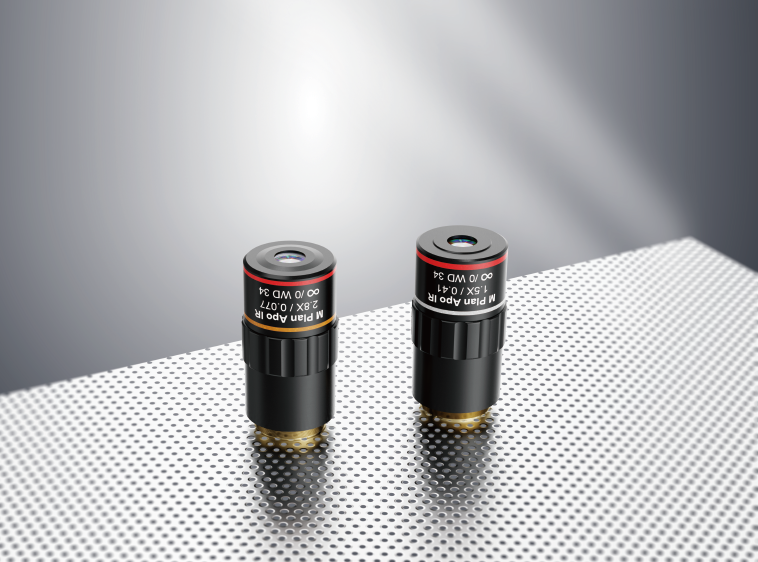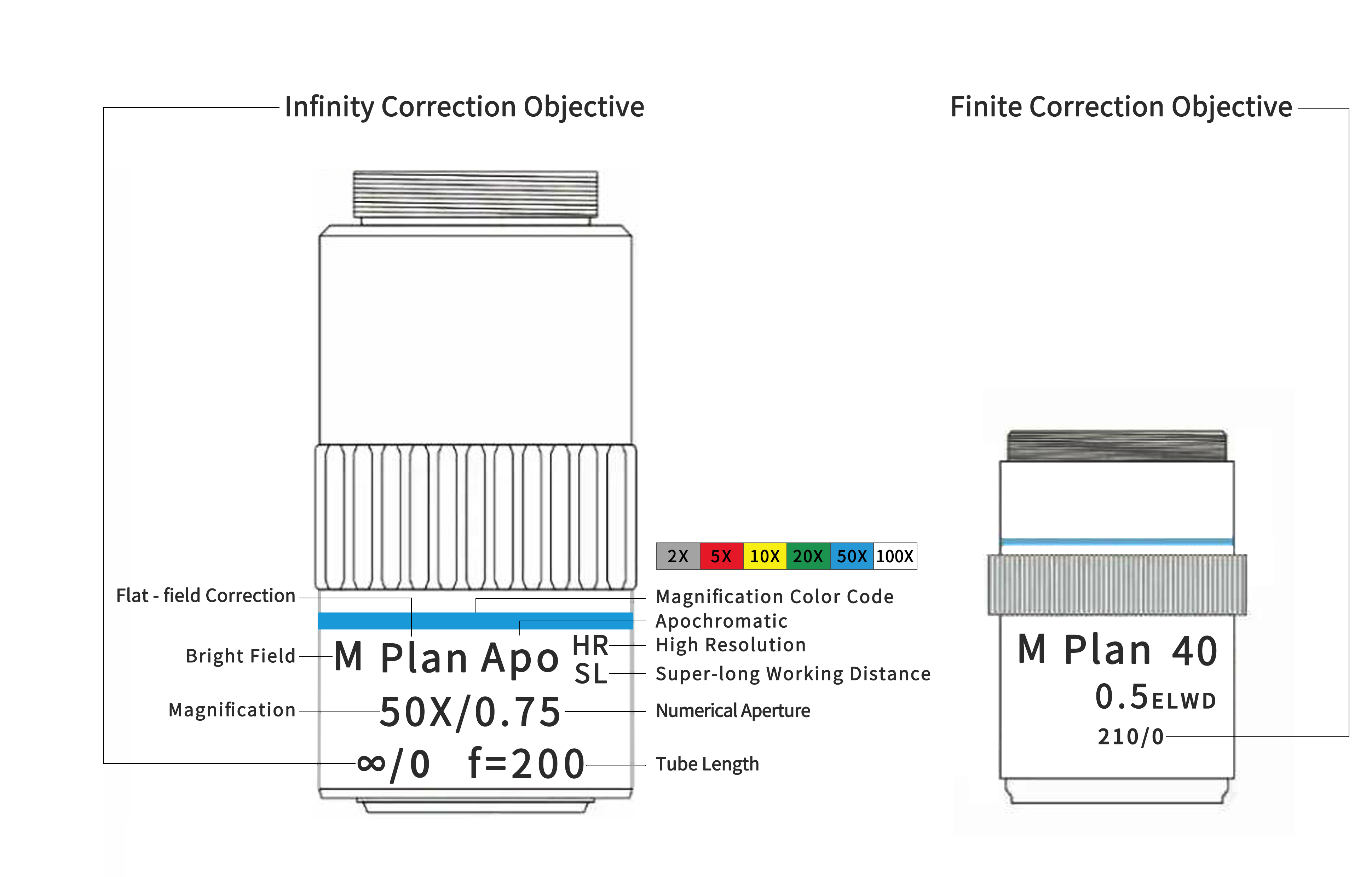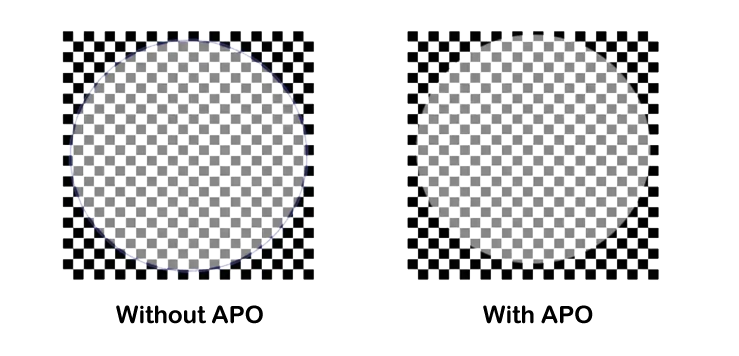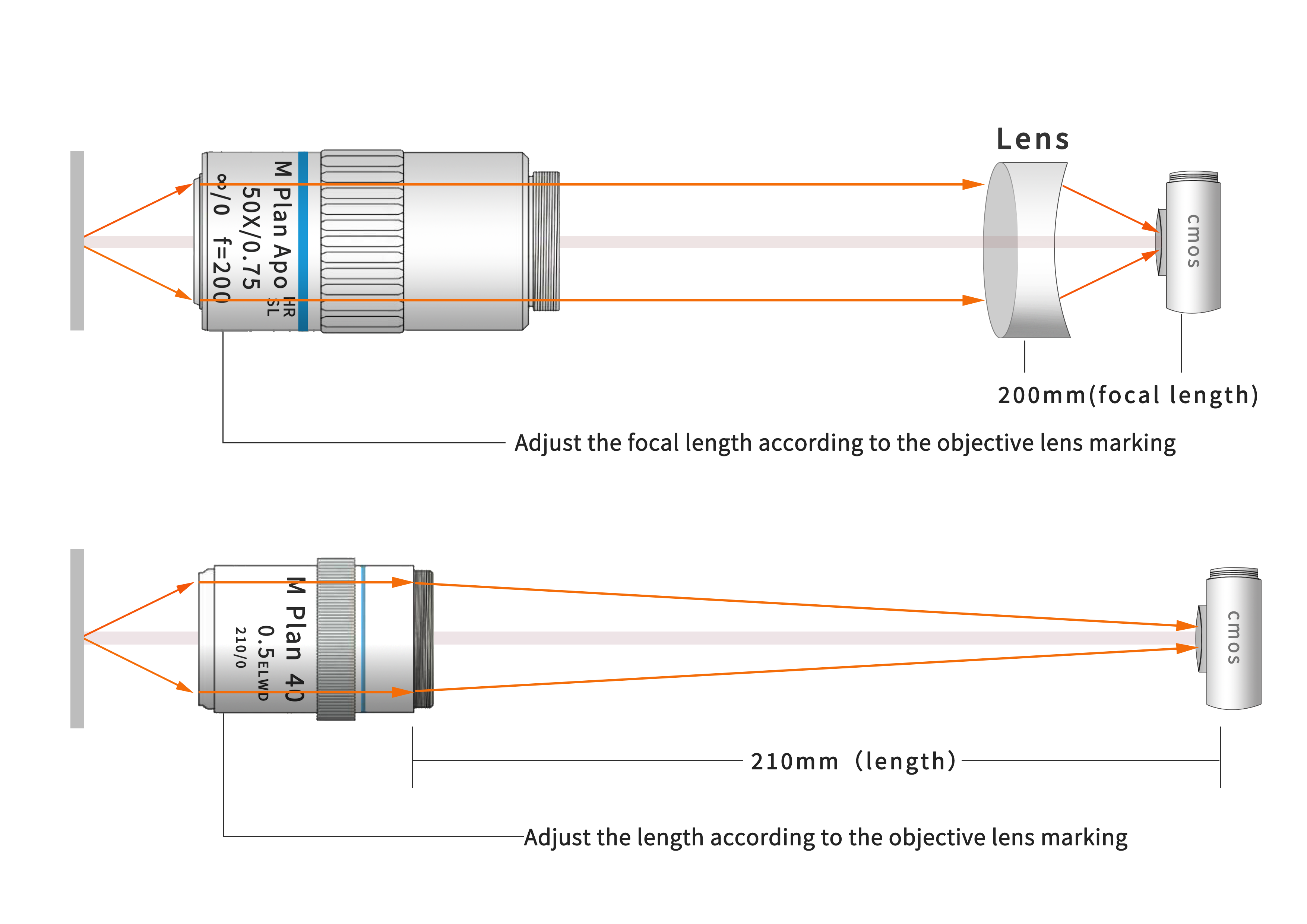
Objective Overview
The objective lens is a critical optical component in a microscope, responsible for the initial magnification of the specimen and influencing imaging quality and optical performance parameters. Comprising multiple lens groups within the objective barrel, each group consists of lenses with varying parameters fused together to effectively correct aberrations. Microscope objectives offer different magnification levels for precise sample imaging. Microscope magnification is the product of the objective and eyepiece magnifications. Beyond magnification, resolution—the ability to distinguish two closely spaced points—is another key determinant of microscope performance. Resolution is defined as the shortest distance between two points still perceived as distinct. While higher magnification reveals smaller objects, clarity depends on resolution. For optical microscopes, resolution is theoretically limited to ~100–200 nm due to visible light wavelengths (400–800 nm). For higher resolution, electron microscopes are recommended.
The numerical Aperture (NA) is crucial for objective performance. higher NA values enhance resolution and brightness. When selecting a microscope, users must consider the sample’s NA, magnification, and resolution requirements. Aberrations—image distortions caused by lens imperfections—also impact performance. Better aberration correction correlates with superior objective quality.

Achromatic Objective:Corrects axial chromatic aberration for red and blue light while simultaneously addressing spherical aberration and near-axis coma. This common objective features a simple design, making it widely used in basic/entry-level microscopes.
Apochromatic Objective:Features a complex design constructed with specialty glass or fluorite (CaF₂) to correct chromatic aberrations across red, green, and blue light wavelengths. Labeled "APO" on the objective barrel, it eliminates residual chromatic aberration and spherical aberration for red/blue light. Due to its exceptionally refined correction of optical aberrations, this objective features a larger numerical aperture (NA) compared to achromatic objectives of the same magnification. This results in higher resolution, superior image quality, and increased effective magnification, enabling it to outperform standard achromatic objectives. Consequently, apochromatic objectives are ideal for advanced research microscopy and high-resolution photomicrography. However, they must be paired with compensating eyepieces during observation; failure to do so will compromise image quality (e.g., color fringing or brightness loss).
Semi-achromatic objective:A semi-achromatic objective, also known as a fluorite objective, is marked with the "FL" symbol on its casing. Structurally, it has more lenses than an achromatic objective but fewer than an apochromatic objective. In terms of imaging quality, it is far superior to achromatic objectives and close to apochromatic objectives.

Flat-field objectives have a more complex structure. In their lens system, a thick meniscus lens is added to correct field curvature. Characterized by a flat field of view, a larger field of view, and a longer working distance compared to standard objectives, they are suitable for advanced research microscopy and microphotography.
Plan Achromatic Objective:Plan achromatic objectives are marked with "PLAN" on their casing. They feature a complex structure with multiple lens elements, which effectively corrects astigmatism and field curvature, overcoming the issue of uneven field sharpness present in standard achromatic objectives. While plan achromatic objectives still exhibit residual chromatic aberration, they can be used without chromatic aberration correction compensation eyepieces if their lateral chromatic aberration is below 1%. If the lateral chromatic aberration is above 1% but below 2.5%, they need to be used in conjunction with compensation eyepieces.
Plan Apochromatic Objective: Plan apochromatic objectives are engraved with "Plan Apo" on their casing. They correct axial chromatic aberration, astigmatism, and field curvature for three spectral lines (red, yellow, and blue), representing the optimal type of microscope objective. The entire field of view is flat and clear, offering superior imaging quality across the entire observable area.
Plan Semi-Apochromatic Objective:Plan semi-apochromatic objectives are engraved with "Plan FL" on their casing, where "FL" typically denotes fluorite (CaF₂) material—thus they are also known as fluorite objectives. Their achromatic performance lies between that of plan achromatic objectives and plan apochromatic objectives.
Plan objectives also include more advanced Super Flat Field objectives (engraved with "S Plan" on the casing) and Super Flat Field Apochromatic objectives (engraved with "S Plan Apo" on the casing).

Objectives designed and manufactured to achieve specific observation effects are called special objectives. They mainly include the following types:
Stress-Free Objective: tress-free objectives are engraved with "PO" or "POL" on their casing. By eliminating mechanical stress during lens assembly, they are specifically designed as objective lenses for transmitted polarized light detection, enabling superior performance in polarized light microscopy.
Long Working Distance Objective: Long working distance objectives are specifically designed and manufactured to meet the microscopic examination needs of materials such as tissue cultures and suspensions. These observed samples (e.g., tissue cultures, suspensions) are typically placed in petri dishes or culture bottles. Only when the objective lens has a sufficiently long working distance can it satisfy the imaging requirements for such samples, as the extended distance allows the lens to focus on the specimen without being obstructed by the container’s thickness or coming into contact with the sample.
Based on microscope structure, objectives are classified into finite correction and infinite correction, with their optical types typically indicated in the bottom row of the labeling information: a numerical value (160, 180, 210) before a slash (/) denotes a finite optical type, while an infinity symbol (∞) before the slash indicates an infinite optical type; different optical types also differ in their connection methods to cameras, as finite correction objectives can be directly connected to the camera by extending the microscope tube, whereas infinite correction objectives require adding a tube lens (such as a close-up diopter or a specially designed tube lens for microscopes) within the extended tube.
Effective focal length:The effective focal length of an objective lens is the distance from the principal plane of the objective to the focal point, denoted by f.
Numerical Aperture (NA):The numerical aperture of an objective lens is used to measure its light-gathering capability, denoted by NA. The formula for NA is NA=n·sin(θ). where n is the refractive index between the objective lens and the observed object, and θ is half of the maximum acceptance angle of the objective lens.
Resolution:The resolution of an objective lens refers to the minimum distance between two distinguishable object points that the objective can resolve, denoted by σ. The formula for calculating the resolution of an objective lens is σ=0.61λ/NA, where λ is the wavelength of the light used, and NA is the numerical aperture of the objective lens.
Magnification:The magnification of an objective lens refers to its inherent ability to enlarge an object by a certain multiple, denoted by M. The formula for objective lens magnification is M=L/f.where L is the optical tube length, and f is the focal length of the objective lens. As indicated by the formula, the magnification of the objective lens is correlated with the tube length—the longer the tube, the higher the magnification. However, increasing the tube length simultaneously degrades imaging quality, so the tube length cannot be arbitrarily altered. Internationally, the standard tube length for microscopes is set at 160 mm, while the Federal Republic of Germany (Levitz) once used 170 mm as a standard; these values are generally engraved on the objective lens casing.
Working Distance:The working distance refers to the distance from the front surface of the objective lens to the surface of the observed sample. Generally, the higher the magnification, the shorter the working distance.
Parfocal Distance:The distance from the objective lens's mounting surface to the specimen surface
Field Number (FN):This term generally refers specifically to eyepieces, not objective lenses.

①Optical microscopes are indispensable and widely used instruments in scientific research, and they can be found in various research institutions across fields such as colleges and universities, scientific research institutes, factories, and national defense sectors. ②Optical microscopes are commonly used detection devices in the healthcare field, and they are indispensable to almost all hospitals, epidemic prevention stations, health stations, and medical colleges in China. Optical microscopes enable healthcare units to observe microorganisms, cells, bacteria, tissue cultures, suspensions, precipitates, etc., playing a crucial role in maintaining public health and facilitating disease diagnosis. ③Optical microscopes are also commonly used inspection equipment in industrial production, widely applied in fields such as electronics and chemical engineering. They can observe both opaque and transparent materials, including metals, ceramics, integrated circuits, electronic chips, printed circuit boards, liquid crystal panels, thin films, powders, toner, wires, fibers, coatings, and more. Additionally, they are indispensable testing instruments in disciplines such as materials science, metallography, and rock identification. ④Optical microscopes have become an important component of modern technical equipment for national defense construction. In the field of national defense science, the development of new materials, the innovation of new products, the verification of new technologies, and the appraisal of new achievements are all inseparable from optical microscopes. ⑤In fields such as environmental protection, life sciences, animal husbandry, plant protection, criminal investigation, and forensic identification, optical microscopes are widely used as important detection tools and supporting technologies.


Focal Length (mm) | 133.33 |
Numerical Aperture (NA) | 0.041 |
Working Distance (WD)(mm) | 34 |
Field Number | 11 |
Optimized Working Spectrum (nm) | 900-1700 |
Parfocal Distance (mm) | 95 |
Mounting Threads | M26×0.706(36 TPI) |
Weight (g) | 210 |
Operating Temperature (°C) | 5-40 |
Focal Length (mm) | 71.43 |
Numerical Aperture (NA) | 0.077 |
Working Distance (WD)(mm) | 34 |
Field Number | 11 |
Optimized Working Spectrum (nm) | 900-1700 |
Parfocal Distance (mm) | 95 |
Mounting Threads | M26×0.706(36 TPI) |
Weight (g) | 182 |
Operating Temperature (°C) | 5-40 |